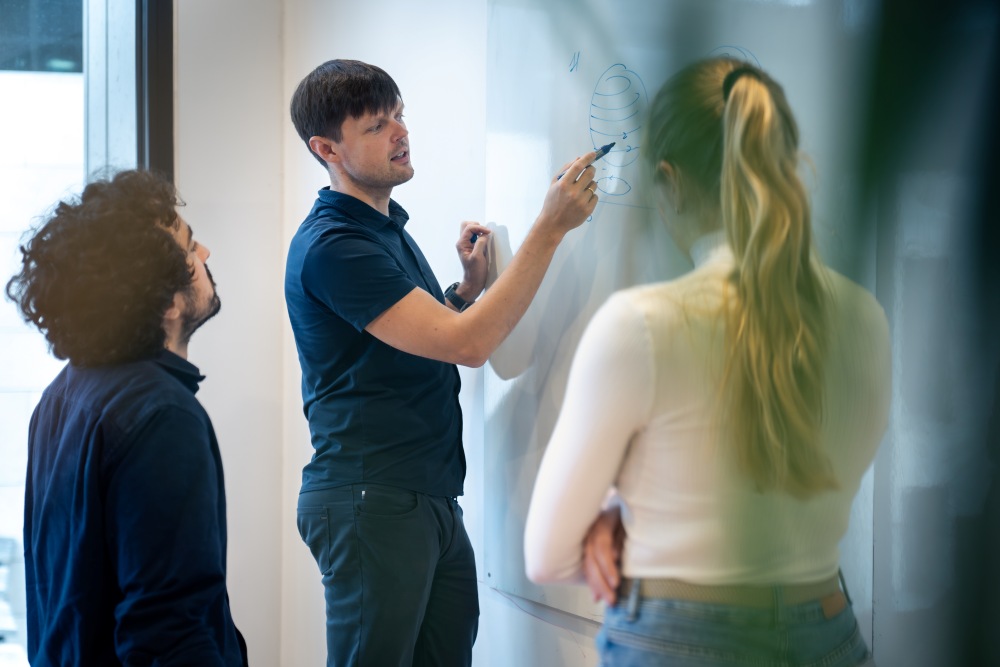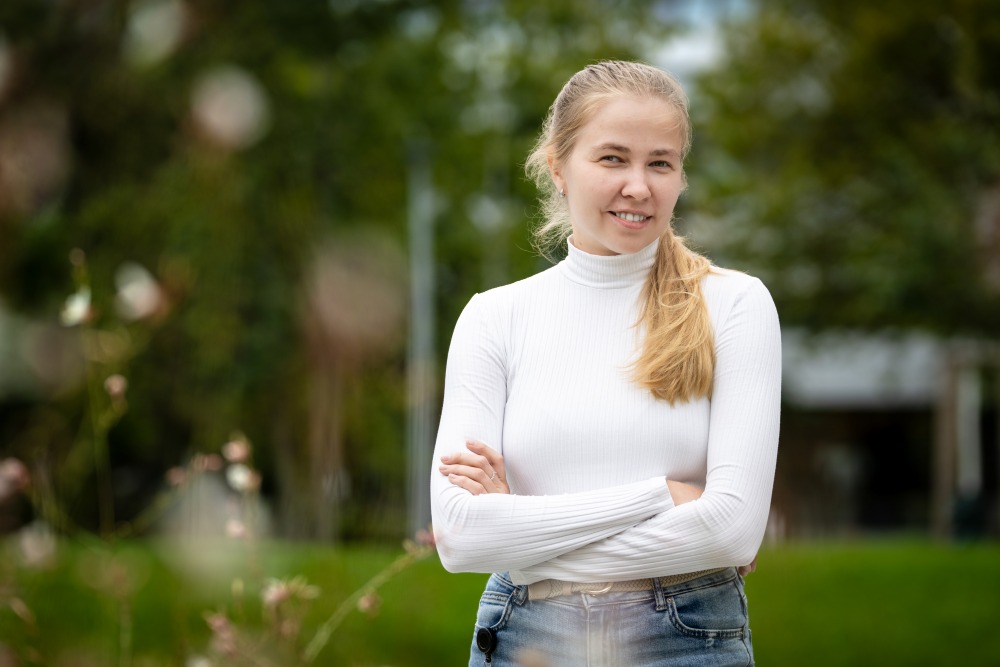November 13, 2025
Reaching for the (Quantum) Scars
ISTA scientists solve complex quantum problems with the help of classical physics
Quantum many-body scars are challenging our understanding of when and how quantum systems reach equilibrium. After recently demonstrating that they are more common than anticipated, researchers from the Serbyn group at the Institute of Science and Technology Austria (ISTA) have developed an algorithm to find them using classical equations of motion. Bridging classical physics and quantum theory, their method, now published in PRX Quantum, could also shed light on other hidden quantum phenomena.

Quantum theory remains a complex science, and a century of research has only brought us closer to appreciating the challenges it poses. One such challenge is understanding the fate of non-equilibrium quantum many-body systems, i.e., what happens to not just one, but many interacting quantum particles out of equilibrium at tiny physical scales. Naively, such systems seem delicate and feature immense complexity; however, if chaos appears, it may erase all this complexity and provide a simple description of the system. How can scientists build a theory of such complex problems? Can they understand how chaos appears early on, when the system’s behavior is still relatively simple?
“Quantum problems are hard to simulate and find solutions to. But we can find ways to gain understanding by using machinery from classical systems,” says Institute of Science and Technology Austria (ISTA) professor Maksym Serbyn. Together with PhD student Elena Petrova, former postdoc Marko Ljubotina, and Gökhan Yalnız, a recent PhD graduate from Björn Hof’s group, he set out to examine the theory behind strange quantum phenomena through the lens of classical physics.
Quantum scars: Elusive order amid the chaos
One phenomenon that particularly interests the Serbyn group is quantum many-body scars. They embody a curious concept whereby interacting particles retain properties that do not ‘decay’ or get ‘dispersed’ over time. Instead, these quantum particles appear to be ‘scarred’ from their own past and return periodically to the vicinity of their initial state. This is the exact opposite of our tangible world, where chaos is the natural tendency—we all know too well how easy it is to trash a tidy space and that it will not tidy itself up without someone investing substantial effort.

A recent publication from the Serbyn group demonstrated that quantum many-body scars are more common than anticipated. The researchers argued that this multitude of quantum scars had likely been overlooked due to their increased complexity. Thus, Petrova and the team took on the challenge of developing an algorithm to find the elusive scars. To go about this, they drew on the “variational principle,” a classical physics principle first described by Paul Dirac in the 1930s. In short, they projected the quantum problem onto a classical dynamical system and utilized classical equations to gain insight into the quantum problem.
Specifically, the notion of “classical periodic orbits” enabled the team to create the ‘bridge’ between the classical and quantum worlds. “Periodic orbits are a well-described concept in classical physics, and scientists characterize both chaotic and non-chaotic systems via a collection of their periodic orbits. However, in quantum science, the notion of periodic trajectories is still foreign,” says Serbyn. “Quantum theory and classical physics tick very differently. But we could link the two fields by using the classical periodic trajectories obtained from projecting the quantum systems.”

“Like a sequence of images at better and better resolution”
Serbyn compares the approach to observing a complex 3D object under a microscope through a multitude of lenses with increasing magnifications. Under the first ‘lens,’ they see a relatively simple classical system resulting from oversimplifying and distorting the projection of the quantum problem. They improve the quality of the image by changing to a more complex projection, akin to examining the object with less-distorting lenses. However, this results in increasingly complex images. “It’s like generating a sequence of images at better and better resolution, which allows us to recover more and more information from the quantum system,” says Serbyn. “Ultimately, the main challenge is to know when we can stop increasing the lens power so that the complexity remains limited, while still gaining information about the quantum system.”
From catching scars to finding other special quantum states
At first, Serbyn was not confident that the approach would work out. However, when Petrova joined his group to tackle this question in her PhD thesis, she soon argued that developing a general tool was worth trying. This tool would be a “microscope with multiple lenses” to search for classical orbits. With the help of Ljubotina and Yalnız, she set out to develop a general algorithm that would allow them to systematically study different projections of the same quantum system. “When considering a complex quantum many-body problem, the space where the dynamics occur is intimidatingly large, so one might not know where to look first,” says Petrova. “But with our method, we can start to ‘zoom in’ and find some simplicity that can ultimately help us better understand the system.”
Beyond spotting hidden quantum many-body scars, Petrova’s tool can also find other interesting quantum states that are even less intuitive. These might include Floquet systems—periodically driven quantum systems, like pendulums or oscillating circuits. “While interacting, such systems are expected to heat up from the general initial states. But if states that avoid heating exist, our method would be able to find them,” says Petrova. Additionally, the algorithm might be able to identify new quantum counterparts of known classical phenomena.

Bridging disciplines
The present work is an example of scientific collaboration facilitated by the multidisciplinary research ecosystem at ISTA. “As quantum theorists, we largely benefited from the physical proximity to the group of Björn Hof, an experimental physics group that studies turbulence and nonlinear dynamics, and classical periodic trajectories are among their areas of expertise. We practically work on the same floor, connected by a bridge,” says Serbyn. Yalnız, who recently defended his PhD at ISTA, contributed a considerable portion of the initial analysis from the classical perspective during his rotation in the Serbyn group at the beginning of his graduate studies. “The idea needed time to unfold, and Elena’s perseverance helped bring it to fruition. But our work also illustrates a dialogue and solid collaboration between classical physicists and quantum theorists, as Gökhan’s insights and intuition for classical systems were really helpful,” Serbyn concludes.

The Serbyn and Hof groups have crossed the bridge that connects their labs at ISTA, embodying their collaboration across distant areas of physics that do not speak the same language.
Publication: Elena Petrova, Marko Ljubotina, Gökhan Yalnız, and Maksym Serbyn. 2025. Finding periodic orbits in projected quantum many-body dynamics. PRX Quantum. DOI: 10.1103/tldp-kvkd



